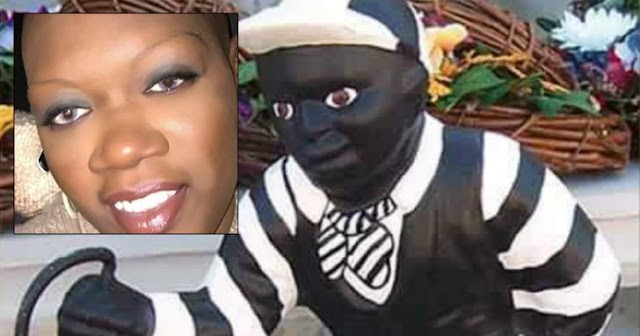
Sandra
Dee McNair owns a lawn jockey and proudly displays it in front of her home. The
figures of a black footman in a jockey uniform holding up a lantern have become
a controversial figure in recent years, and in this time when racial
sensitivities are high, a lot of people have not been able to hold back from
chastising McNair about her choice of lawn art.
McNair
took to Facebook to explain it once and for all with a mic-drop post. “I often
get asked about my lantern footman sitting in my front yard," McNair
begins, telling her that black people have told her that 'it makes people think
you are a racist' or 'it is offensive to white people'. McNair says she just
laughs off the ignorance.
"I'm
really amazed at how a lot of people don't know the real meaning behind these
statues, so they vandalize them, bitch about them being racist, etc.," she
goes on. "The image of a black 'footman' with a lantern signified the home
was a stop on the Underground Railroad. These are largely a northern thing, and
weren't commonly found in the South until after WWII when northerners moved
there and brought this custom with them."
The
Underground Railroad used a lot of symbols to help guide slaves to freedom, and
modern historians have been busy trying to decode some symbols believed to be
significant. Historians have found patchwork quilts that they believe were
actually maps to help slaves learn the way. Code words were used by people
working on the Underground Railroad to communicate with others in the know.
Tying a green ribbon on a lawn ornament meant an Underground Railroad supporter
lived in a home.

"The
clothing of the statue was also coded. A striped jockey's shirt meant that this
was a place to swap horses, while a footman in a tailed coat meant overnight
lodgings/food, and a blue sailor's waistcoat meant the homeowner could take you
to a port and get you on a ship to Canada," wrote McNair.
Other
sources commonly report that a green scarf tied around a jockey's neck
reportedly meant runaway slaves were welcome to come in, while a red scarf
meant that the house was under surveillance and they should keep away.
Lawn
jockeys were named after Jocko Graves, an African-American hero. As a youth,
Graves served under General George Washington as he crossed the Delaware. Washington
left Graves to take care of horses and keep a light on at night to help
Washington's troops return to the Pennsylvania shore. When Washington and his
troops returned, they found the dedicated Graves had frozen to death, lantern
still in hand, on the river bank. Even dying, the young man refused to abandon
his post. Washington was so moved by Graves' dedication that he commissioned a
statue of him and installed it on the lawn at his Mount Vernon estate. The
statue was originally entitled 'The Faithful Groomsman'.
"I
always laugh when I hear black folks talk about how racist these are, because
honestly, the cats who had them were likely the LEAST racist. Later, these came
back into popularity after WWII, and they were again coded to show the white
homeowners supported early civil rights efforts, weren't Klan, etc."
McNair, who herself is African-American, concludes in her post.
Source : madworldnews.com
